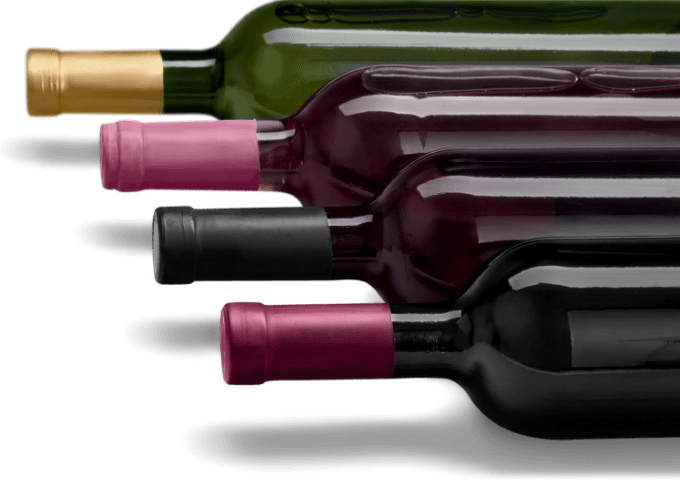Top rated

Pairing Smelly Cheese with Wine: A Guide to Heavenly Flavour Combinations
Pairing Smelly Cheese with Wine: A Guide to Heavenly Flavour Combinations
Cheese and wine are two of life's great pleasures, and when they are paired together properly, the results can be absolutely heavenly. But what happens when the cheese in question is smelly? Some may be put off by the pungent aroma of certain cheeses, but for those with a more adventurous palate, these cheeses can provide a truly unforgettable culinary experience. We will explore the world of smelly cheese and wine pairing, delving into the science behind the flavours and providing tips and tricks for finding your perfect match.
What Makes Cheese Smelly?
First, let's define what we mean by "smelly cheese." There are a wide variety of cheeses out there, ranging from mild and creamy to sharp and tangy. However, some cheeses are known for their distinctive, strong odours. These cheeses are often described as "stinky," "funky," or "pungent." Examples include Roquefort, Gorgonzola, Limburger, and Epoisses, to name just a few.
So what makes these cheeses so smelly? It all comes down to the types of bacteria involved in the cheese-making process. Many kinds of cheese are made using lactic acid bacteria, which consume lactose and produce lactic acid. This acid helps to coagulate the milk and form curds, which eventually become cheese. However, some cheeses are made using different types of bacteria, such as Brevibacterium linens or Penicillium roqueforti. These bacteria create distinct flavours and aromas in the cheese, ranging from earthy and mushroomy to sharp and spicy.
Pairing Smelly Cheese with Wine: The Basics
Now that we've established what makes certain cheeses smelly, let's move on to the fun part: pairing them with wine. When it comes to pairing cheese and wine, there are a few basic principles to keep in mind. First and foremost, you want to find a wine that complements the flavour of the cheese, rather than overpowering it. This means looking for wines with similar flavour profiles or contrasting flavours that can balance out the cheese's intensity.
Another important factor to consider is the texture of both the cheese and the wine. Rich, creamy cheeses may pair well with full-bodied wines, while lighter cheeses may work better with lighter-bodied wines. And don't forget about acidity! Wines with high acidity can help cut through the richness of certain cheeses and cleanse your palate between bites.
With these principles in mind, let's explore some specific pairings for smelly cheese and wine.
Pairing Roquefort with Sauternes
Roquefort is a classic example of a smelly cheese, with its pungent aroma and tangy, salty flavour. This blue cheese pairs beautifully with a sweet dessert wine like Sauternes. The sweetness of the wine helps to balance out the saltiness of the cheese, while the high acidity cuts through the richness and leaves your palate feeling refreshed.
Pairing Epoisses with Chablis
Epoisses is a soft, creamy cheese with a pungent aroma and a flavour that can be described as buttery, nutty, and mushroomy. This cheese pairs well with a crisp, acidic white wine like Chablis. The acidity of the wine helps to cut through the richness of the cheese, while the subtle flavours of citrus and green apple in the wine complement the nutty and mushroomy notes of the cheese.
Pairing Limburger with Pinot Noir
Limburger is a washed-rind cheese with a pungent aroma and a flavour that can be described as earthy, meaty, and spicy. This cheese pairs well with a light-bodied red wine like Pinot Noir. The light tannins and fruity flavours of Pinot Noir complement the earthy and spicy notes of Limburger, while the wine's acidity helps to cut through the richness of the cheese.
Pairing Gorgonzola with Barolo
Gorgonzola is a blue cheese with a creamy texture and a sharp, tangy flavour. This cheese pairs well with a full-bodied red wine like Barolo. The tannins in the wine help to balance out the richness of the cheese, while the wine's fruity and spicy notes complement the tangy flavour of the cheese.
Pairing Taleggio with Barbera
Taleggio is a semi-soft cheese with a pungent aroma and a flavour that can be described as buttery, nutty, and slightly sweet. This cheese pairs well with a medium-bodied red wine like Barbera. The wine's bright acidity and fruity notes complement the nutty and slightly sweet flavour of the cheese, while the wine's light tannins help to balance out the cheese's creaminess.
Pairing Munster with Gewurztraminer
Munster is a washed-rind cheese with a pungent aroma and a flavour that can be described as meaty, nutty, and slightly spicy. This cheese pairs well with a white wine like Gewurztraminer. The wine's floral and spicy notes complement the cheese's nutty and slightly spicy flavour, while the wine's sweetness helps to balance out the cheese's saltiness.
Tips and Tricks for Pairing Smelly Cheese with Wine
While the pairings above are a great starting point, there are no hard and fast rules when it comes to pairing cheese and wine. Here are some tips and tricks to help you find your perfect match:
Experiment with different combinations. Don't be afraid to try out different pairings and see what works for your taste buds. You might be surprised by what you discover!
Consider the age of both the cheese and the wine. As cheeses and wines age, their flavours and textures can change. A younger cheese may pair well with a lighter-bodied wine, while an older cheese may require a more full-bodied wine to stand up to its flavour.
Try out different textures of cheese. Smelly cheeses come in a wide variety of textures, from soft and creamy to hard and crumbly. Experiment with different textures to find a pairing that works for you.
Think outside the box. While the classic pairings above are tried-and-true, don't be afraid to try something different. For example, a funky blue cheese might pair well with a sweet dessert wine, or a nutty cheese might work well with a dry sherry.
Pay attention to the temperature of both the cheese and the wine. Cheese should be served at room temperature, while wine should be served slightly chilled or at room temperature, depending on the wine. Serving both at the correct temperature can enhance the flavours of both.
Pairing smelly cheese with wine can be a delicious and rewarding experience. With a little experimentation and some basic knowledge of cheese and wine, you can create flavour combinations that are truly out of this world. Whether you're a fan of blue cheese or washed-rind cheeses, there's a wine out there that can complement its unique flavour profile. So why not try something new today and discover your new favourite pairing? Your taste buds will thank you!
























































 Login with Google
Login with Google
